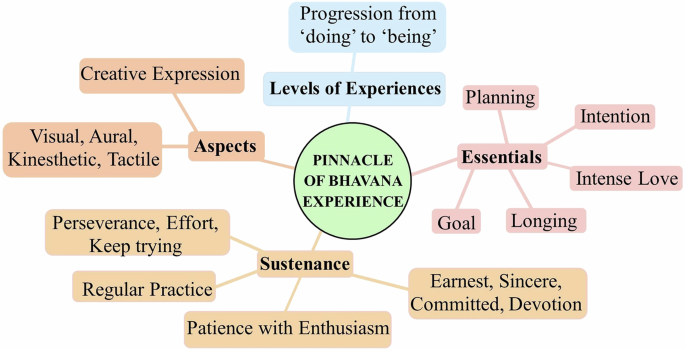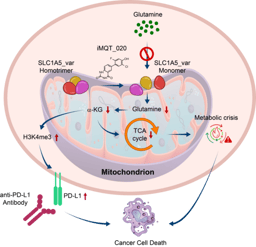Beyond Visualization: Rediscovering Bhāvanā — The Science of Becoming
Published in Behavioural Sciences & Psychology and Philosophy & Religion
A Missing Ingredient in Modern Mindfulness
As meditation becomes a global wellness tool, one question lingers: have we lost touch with its deeper, transformative purpose?
What Is Bhāvanā?
The Sanskrit term bhāvanā literally means “to bring into being.”
It’s not about watching your thoughts drift by. It’s about cultivating your inner world through imagination, sensory awareness, and emotional depth.
In essence, bhāvanā reveals meditation as a process of becoming that ripens into being—an inner cultivation through which transformation gradually unfolds into presence.
The Research Behind the Rediscovery
Our study explored how long-term practitioners of the IAM®-35 meditation technique experience bhāvanā.
And the insights were surprising:
Many participants didn’t “see” anything during meditation at all.
“I can’t visualize, but I can feel it. My breath changes. My spine aligns. Something shifts.”
This challenges the assumption that inner cultivation happens only through imagery. Instead, bhāvanā emerged as multisensory: tactile, kinesthetic, auditory, and emotional, a lived, embodied process rather than a visual one.
The PAL Framework: Mapping Inner Transformation
To capture this depth, we developed the PAL Framework—a model describing bhāvanā as a holistic, embodied process:
Through in-depth interviews with 27 seasoned IAM®-35 practitioners, many with over 13 years of experience, a clear, lived structure of bhāvanā emerged.
We called it the PAL Framework, identifying three interwoven dimensions of this inner cultivation process:
- P — Prerequisites: Foundational attitudes that prepare the mind, such as perseverance, patience with enthusiasm, and clear intention.
- A — Aspects: The creative, sensory “toolkit” of bhāvanā: engaging imagination, emotion, and memory to build a vivid inner landscape.
- L — Levels of Experience: The deepening stages of transformation, from active cultivation to inner change, lived integration, and ultimately, unity.
Together, these dimensions describe bhāvanā not as a step-by-step technique, but as a living process, a continuous movement of becoming that matures into being.
More Than Visualization: The Multisensory Reality of Meditation
Practitioners described their experience through multiple sensory channels:
-
Tactile – “I feel warmth in my palms.”
-
Kinesthetic – “My breath deepens, and my spine realigns.”
-
Auditory – “I hear the mantra resonate inside me.”
-
Emotive – “There’s a sense of groundedness, even without imagery.”
These accounts suggest that bhāvanā operates through whole-body awareness, not just mental imagery, aligning with current research in interoception, embodied cognition, and contemplative neuroplasticity.
By engaging the senses as gateways to transformation, bhāvanā reframes meditation as a fully embodied experience of becoming, rather than a detached exercise of the mind.
Bhāvanā Beyond Meditation
One of the most striking findings was how bhāvanā extends far beyond meditation itself. Practitioners described applying the same principles in their work, relationships, and creative projects:
“When I built my home, it was bhāvanā — not just imagining it, but sensing it, refining it, and bringing it into reality.”
In this way, bhāvanā becomes a model for intentional living, where imagination, emotion, and ethical awareness merge into everyday action.
It points to a deeper insight: bhāvanā is self-creation, not self-regulation—a practice of shaping life from the inside out.
Why This Matters
By bringing an ancient contemplative concept into dialogue with modern behavioral science, our study reframes well-being as an embodied process of transformation rather than mere regulation.
The PAL Framework offers a clear, experience-based model of how intention, imagination, and emotion co-create change, showing that bhāvanā is not passive mindfulness but active cultivation.
In doing so, this work contributes to ongoing efforts to decolonize mental health research by honoring non-Western frameworks of inner development.
It reminds us that meditation was never meant to be an escape from life but the conscious, creative embodiment of it.
What’s Next
The PAL Framework now invites exploration across disciplines and cultures, from mindfulness-based interventions to embodied psychotherapy and contemplative neuroscience.
By widening the lens of what bhāvanā can mean, and how it can be felt, we open new frontiers in understanding how sustained inner cultivation transforms the mind, body, and self.
Join the Reflection
Have you ever felt transformation happen — not in your thoughts, but in your body?
Share your reflections below — how do you experience bhāvanā, or the cultivation of being, in your own research or daily life?
Together, let’s explore how ancient wisdom and modern science meet in the art of becoming.
Study Title: Defining Bhāvanā through the PAL framework: grounded theory insights from long-term IAM®-35 practitioners
Published: September 25, 2025 Humanities and Social Sciences Communications
Read it here: https://www.nature.com/articles/s41599-025-05783-y
Authors:
Shobana Pillai is Assistant Professor in the Department of Yoga at Amrita Vishwa Vidyapeetham (Amritapuri, India) and Director of Amrita Yoga®. She has more than two decades of experience teaching and training the IAM® meditation and Amrita Yoga® internationally, including in prisons, schools and community initiatives under the Mata Amritanandamayi Math. She leads a global network of programmes grounded in a living yoga lineage. Her work connects contemplative practice, pedagogy and global wellbeing.
Hemaa Manimaran is a certified Amrita Yoga® instructor in the Department of Yoga at Amrita Vishwa Vidyapeetham (Amritapuri, India), with more than nine years of experience teaching the IAM® meditation and Amrita Yoga® across diverse groups in India. Her teaching focuses on experiential learning, sensory awareness, and integrative approaches to personal transformation.
Glenn B. Mannheim, M.D. is a physician and independent regulatory consultant based in New Jersey, USA. He previously served as a regulatory scientist and reviewer at the U.S. Food and Drug Administration, contributing to evaluations in psychiatry, neuroscience and behavioral health. His current work integrates contemplative science with regulatory and developmental perspectives.
Prof. Maneesha Vinodini Ramesh is Pro Vice-Chancellor of Amrita Vishwa Vidyapeetham and Dean of the School for Sustainable Futures. She holds the UNESCO Chair on Experiential Learning for Sustainable Innovation and Development and directs the Amrita Center for Wireless Networks & Applications. She is a pioneering researcher in AI-enabled early-warning systems, climate resilience and sustainable development, and has been ranked among the world’s top 2% of scientists in networking and telecommunications by Stanford University. Her work applies science, sustainability and technology for societal benefit.
Follow the Topic
-
Humanities and Social Sciences Communications

A fully open-access, online journal publishing peer-reviewed research from across—and between—all areas of the humanities, behavioral and social sciences.
Your space to connect: The Psychedelics Hub
A new Communities’ space to connect, collaborate, and explore research on Psychotherapy, Clinical Psychology, and Neuroscience!
Continue reading announcementRelated Collections
With Collections, you can get published faster and increase your visibility.
Interdisciplinarity in theory and practice
Publishing Model: Open Access
Deadline: Dec 31, 2025
Addressing the impacts and risks of environmental, social and governance (ESG) practices towards sustainable development
Publishing Model: Open Access
Deadline: Mar 27, 2026


Please sign in or register for FREE
If you are a registered user on Research Communities by Springer Nature, please sign in